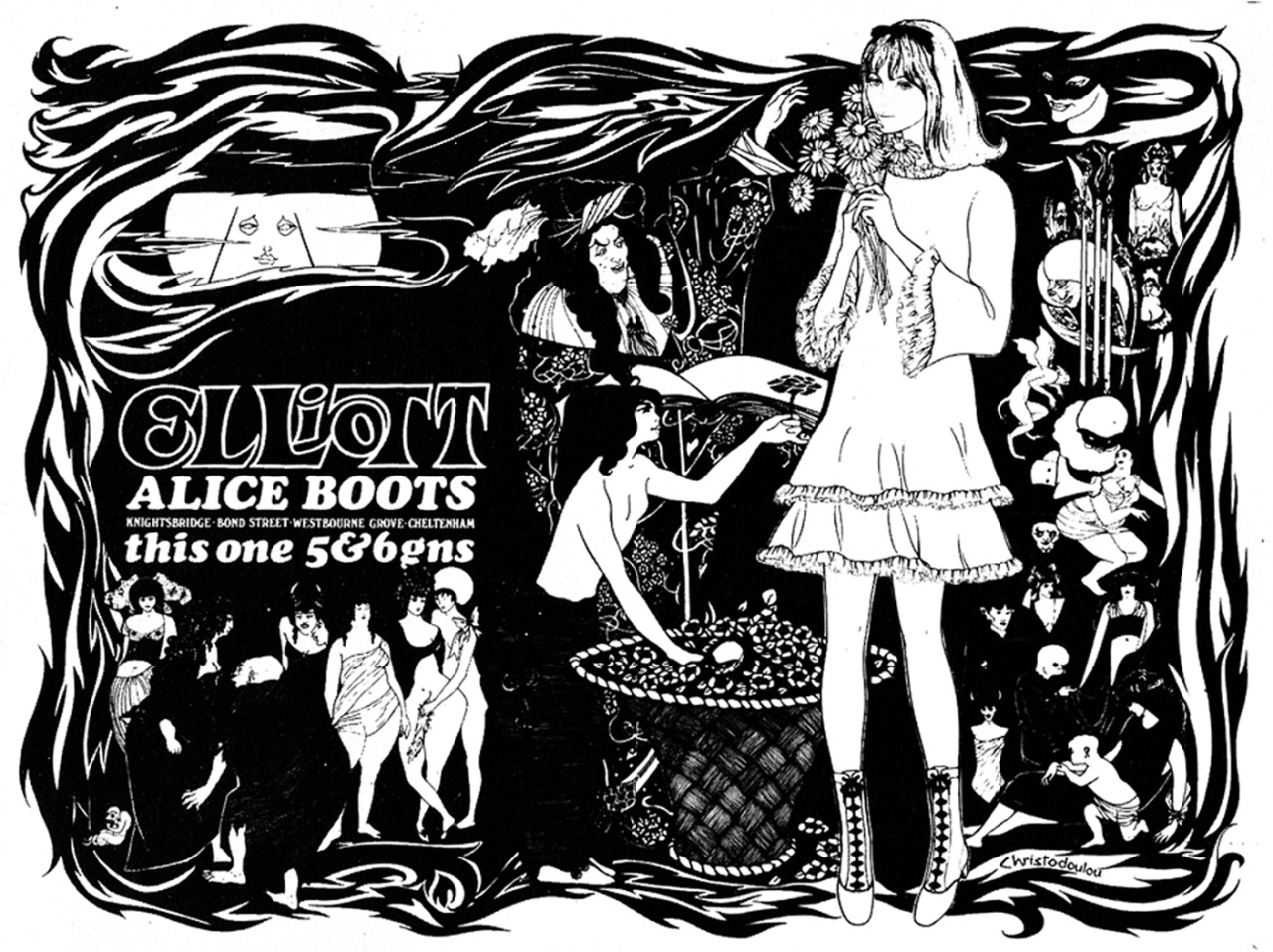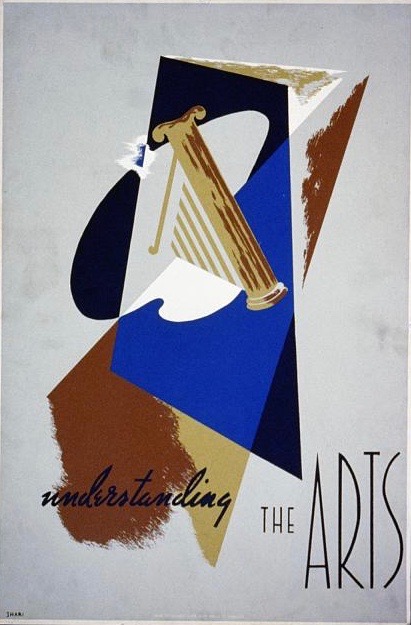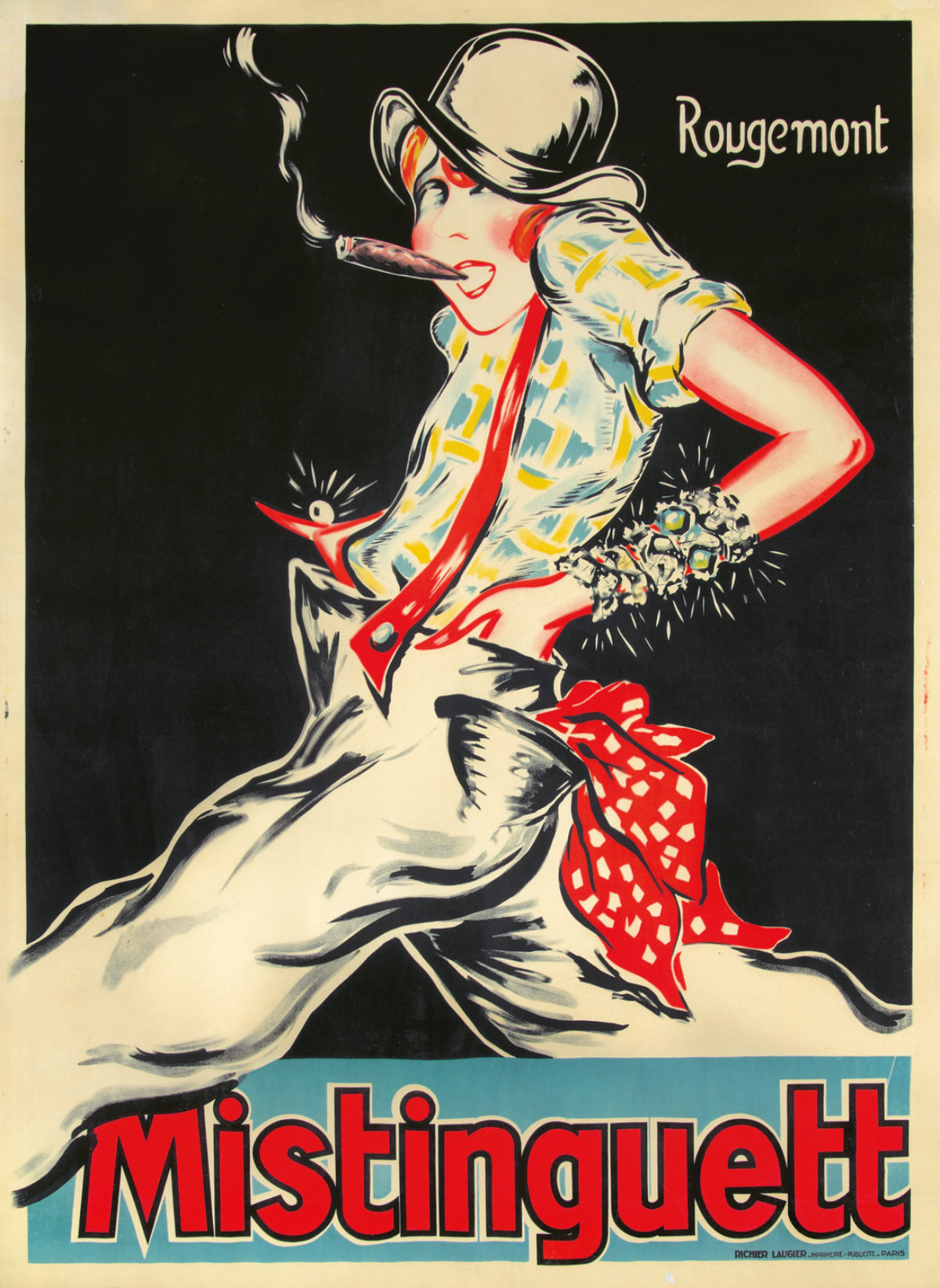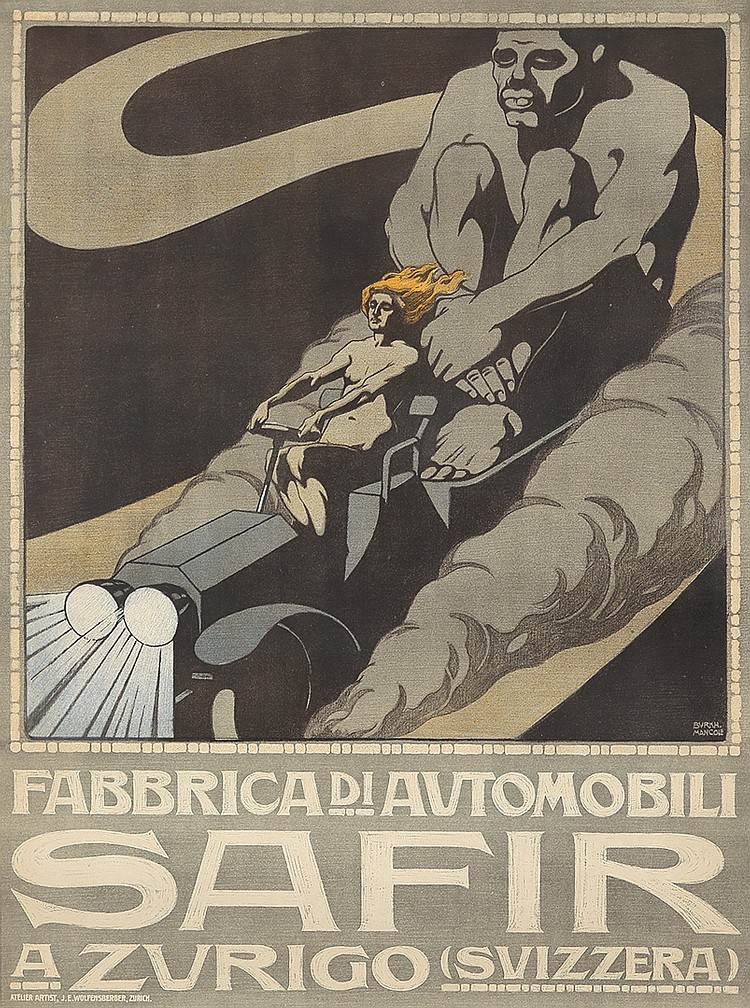
The Allure of the Open Road
.For the sake of full disclosure, this blog post came about as part of research I am doing on the feasibility of a show on a century of automobile posters. The first recorded gasoline-powered automobile was a three-wheeler manufactured by Carl Benz, appropriately named the Benz Motorwagen Model Number One, which had its initial public outing in July 1886. Maybe more importantly, the first “road trip” took place on August 5, 1988, when Bertha Benz, without her husband’s knowledge, took her two teenage sons and drove an improved version of the vehicle “the Model 3” on a 112-mile trip to visit her mother. This proved the practicality of the automobile and also ensured that women, as well as men, were associated with this mode of transportation.
Early car posters tended to feature not just the vehicles themselves, but also competing modes of transportation, the train and the plane, both of which were also undergoing a revolution. The individual freedom offered by the car was, of course, its unique selling point, and is highlighted in many of these compositions—sometimes in surprisingly vivid fashion considering the era. Surrealism, humor, and sex were among the tools deployed by graphic designers, concepts that are still prevalent in car advertising today. Additionally, the idea of the car as a personal statement rather than merely a practical mode of transportation was clearly an overriding notion from the beginning. Nearly a century later, Top Gear, the most popular motoring TV show in the world, would incorporate many of the same ideas.
When I started looking at these posters, both their frankness and the role they accorded women surprised me—after all, women did not get the right to vote in most European countries or the United States until after World War I. But the inherent excitement and freedom promised by the vehicles in these early posters was universal, and continued to be the leitmotif of the automotive industry for the next century.
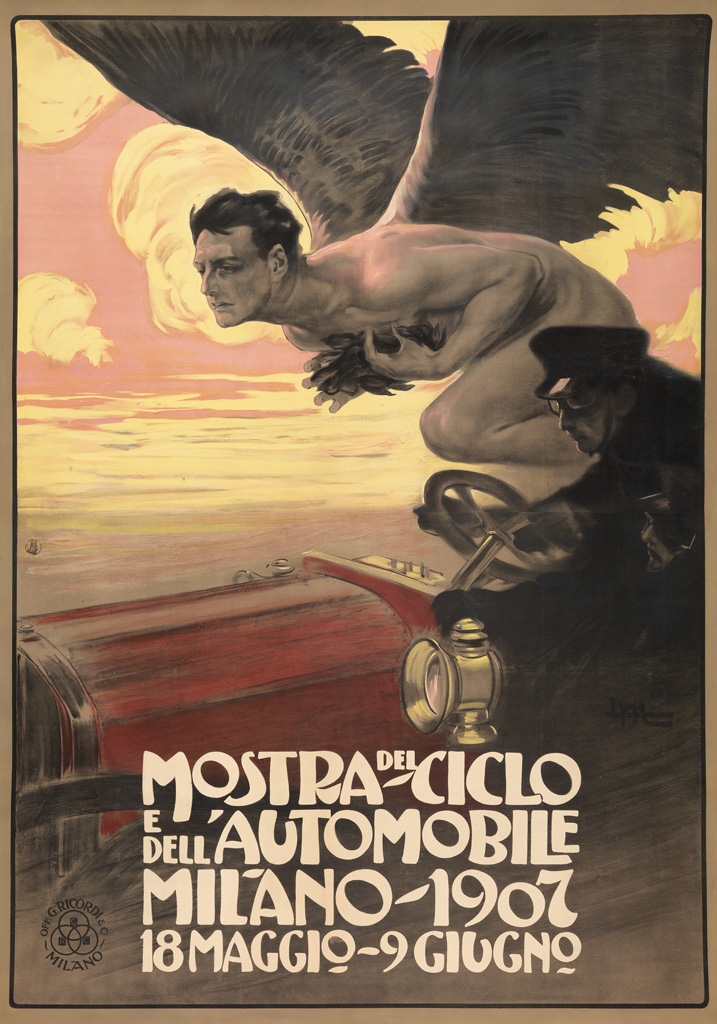
Leopoldo Metlicovitz, 1907
Image courtesy of Swann Auction Galleries
In this poster for an early cycle car show, a winged figure flies longside the red sports car, driven by two determined drivers. It was not until the 1920s that Rosso Corsa (racing red) became the international racing color of Italy, with Alfa Romeo, Lancia, Maserati, and later Ferrari among the manufacturers using it. The angel carries a crown of laurels, presumably to honor the winner of the race.

Burkhard Mangold, 1907
Image courtesy of Invaluable
Safir was a Swiss company that only existed between 1906 and 1910, producing a few dozen cars. The dust created by this speeding vehicle as it exits an S-curve, the shape evoking the first letter of the manufacturer’s name, is in itself a powerful enough motif. It is enhanced, however, by the figure of a nude woman with flaming-red hair driving a giant ogre-like creature crouched on the back seat, possibly demonstrating that even his power is dwarfed by that of the car.
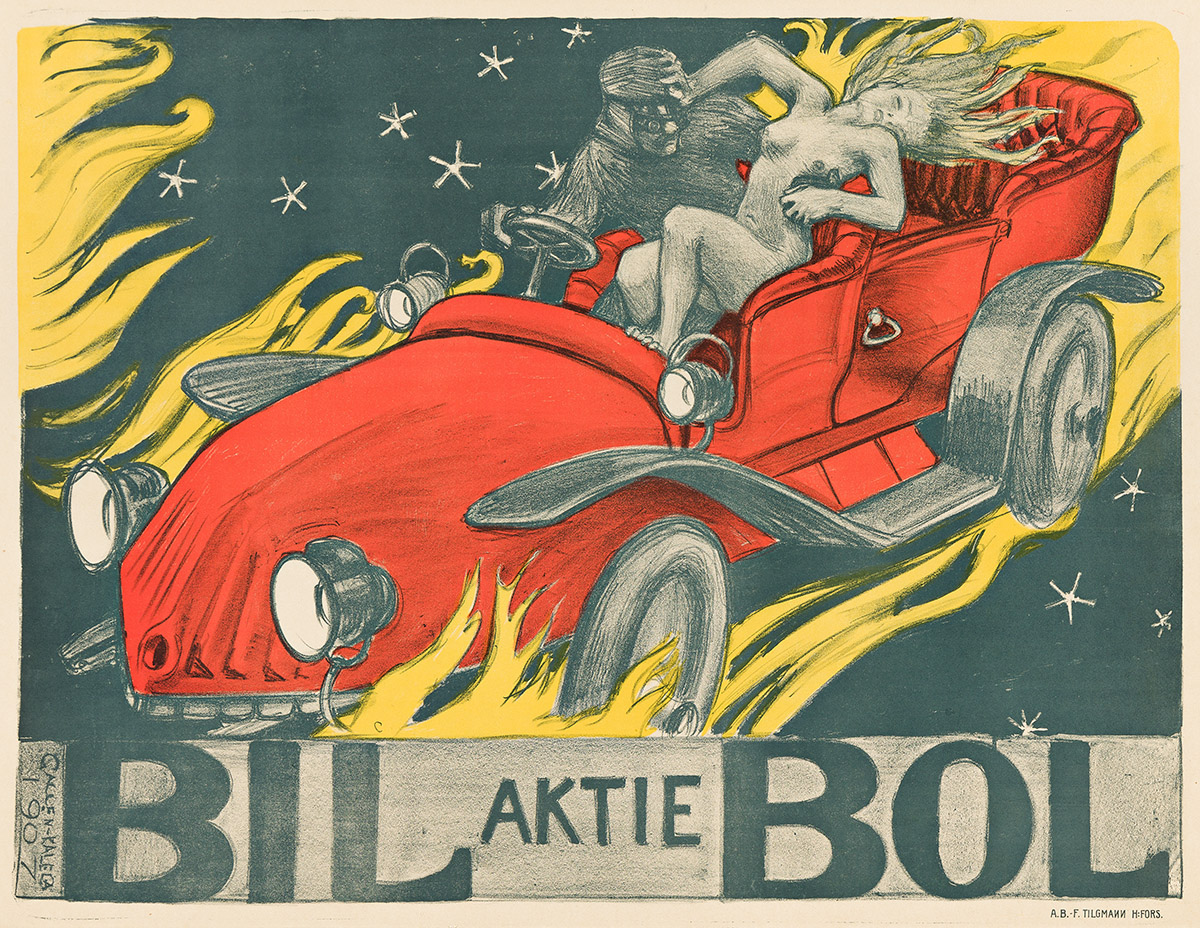
Akseli Gallen-Kallela, 1907
Image courtesy of Swann Auction Galleries
In 1907, poster designers clearly let their imaginations run riot, perhaps nowhere more so than in this advertisement for a Finnish car company (although the title of the poster is actually in Swedish). Legend has it that the owner of the company took the designer out for an extremely rapid ride through the streets of Helsinki, both scaring and inspiring him. The poster is based on a story from The Kalevala, Finland’s national epic, featuring the warrior hero Lemminkäinen, here in the guise of a sinister motor-car fanatic, and Kyllikki, the flower of Saari (here the nude woman in the back seat) whom he abducts on his sled, transposed to a red car. The passion of the moment is suggested in the image as sheets of flame lap at the car, their forms reflecting those of the streaming hair of Kyllikki. It thus anticipates so many modern advertising campaigns in which physical desire is equated with an urgent need for consumer products. The image is still so popular in Finland that in 2006 it was featured on a postage stamp.
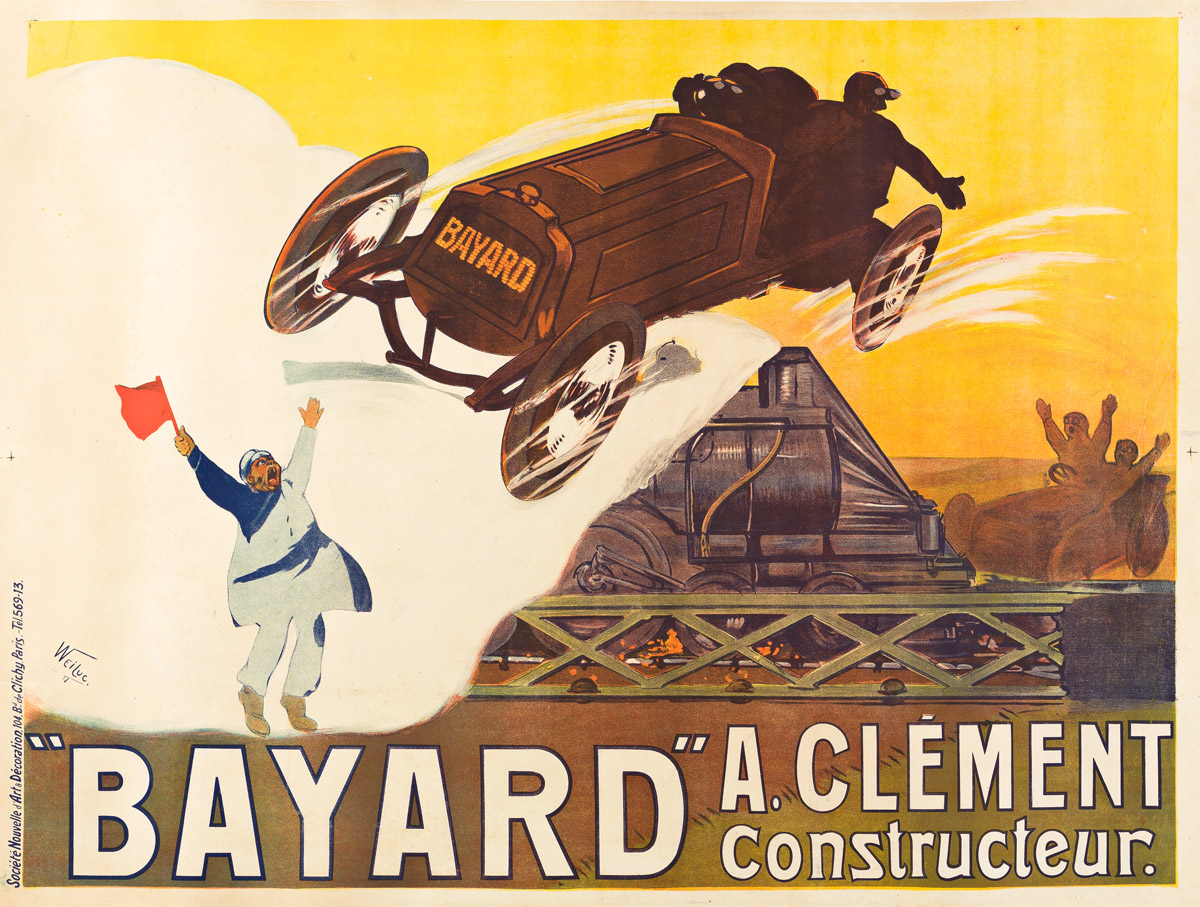
Weiluc, 1908
Image courtesy of Swann Auction Galleries
This humorous early poster for Clément-Bayard, a French manufacturer of cars, planes, and airships, shows the shock on the faces of the signalman and other motorists as the car vaults over the oncoming train. Although clearly not plausible, the image is supposed to emphasize the superior modern powers of the automobile.
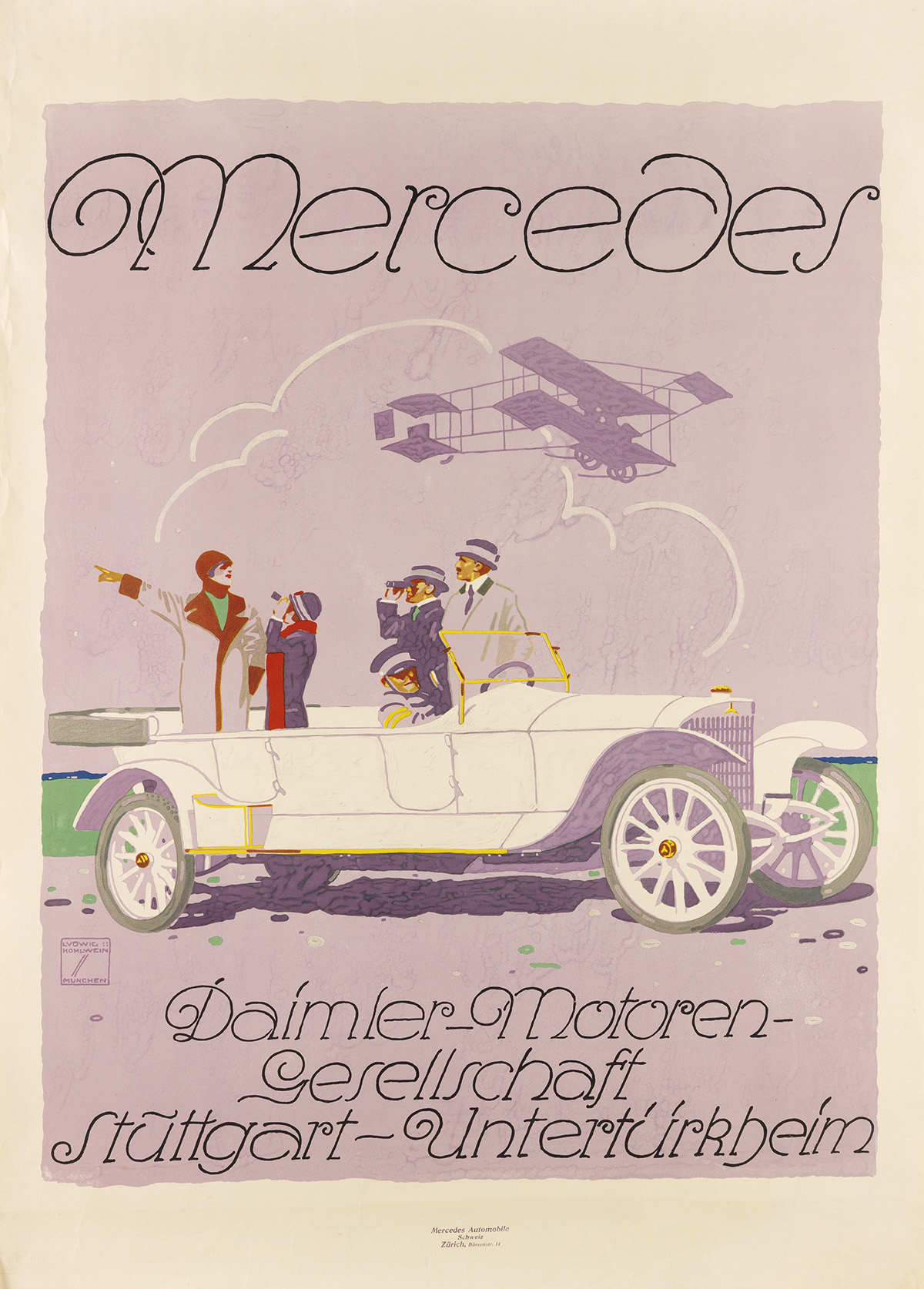
Ludwig Hohlwein, 1914
Image courtesy of Swann Auction Galleries
In contrast to the other posters in this post, Hohlwein’s early Mercedes advertisement suggests refinement and gentility over speed and aggression. The soft lavender tones of the image and the extremely well-dressed couples point to the kind of customer the manufacturer sought to attract. But Hohlwein’s design also indicates that women, as well as men, were targeted by such advertising. Meanwhile, the biplane hovering above the Mercedes suggests that both vehicles represent the latest technological advancements; it also references the fact, for those in the know, that Mercedes also made aircraft engines at this time.
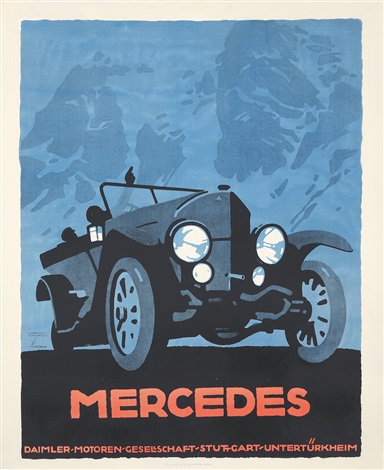
Ludwig Hohlwein, 1914
Image courtesy of Artnet
This second Hohlwein design for Mercedes shows the shadowy figure of the driver pointing up to the craggy forms of the Alps, which echo those of the vehicle: the 28/95, the manufacturer’s most powerful model at the time. This gesture suggests that the car is more than capable of tackling the great mountain range. As World War I approached, the production of such high-tech vehicles for individuals was abandoned in favor of wartime production of military equipment.
Of the car companies featured in these posters, only Mercedes Benz still exists. Over the years, many manufacturers have closed or been absorbed into the large multi-brand conglomerates that now dominate global car manufacturing. However, the perceived identities of those brands and their relationships to the individual tastes and aspirations of consumers remain key marketing tools that range in style from the exciting to the rugged and the demure.


